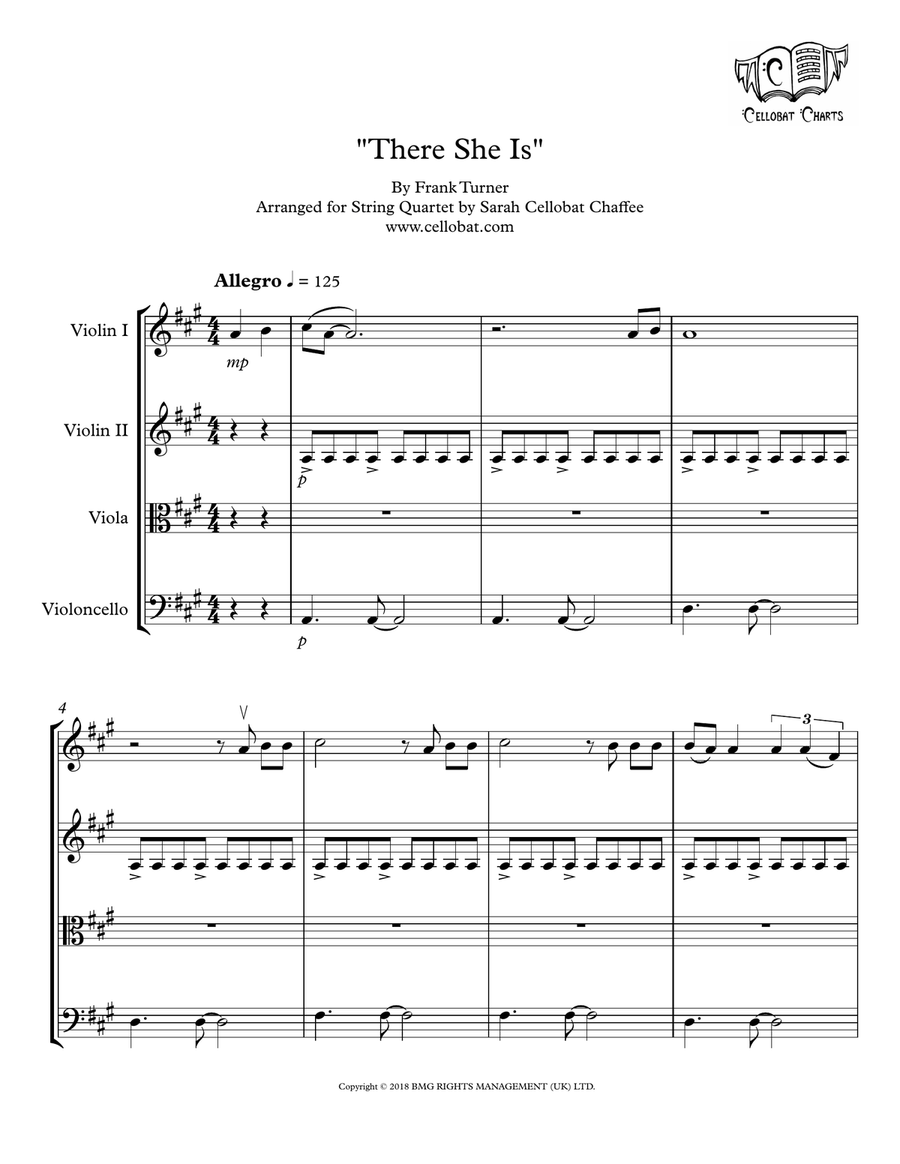String Quartet Cello,String Quartet,Viola,Violin - Level 3 - Digital Download SKU: A0.1026910 Composed by Frank Turner. Arranged by Sarah Cellobat Chaffee. Contemporary,Pop,Rock,Wedding. 17 pages. Sarah Cellobat Chaffee #632388. Published by Sarah Cellobat Chaffee (A0.1026910). Frank Turner is an English singer-songwriter who began his career as the singer for the band Million Dead. After the breakup of the band in 2005, Turner embarked on a solo career, which has turned out to be far more successful -- he has since released nine solo albums, gained a large international following, and even recently had an album reach number 1 on the UK charts. There She Is, a powerful slow-build song reminiscent of Coldplay or U2, was released in 2018 to critical and audience acclaim -- and you'd be surprised how great this song sounds on strings! Originally written for a wedding, this Cellobat chart for your string quartet maintains the passionate dynamic builds, lush harmonies, driving rhythms, and soaring melodies of the original, for an arrangement that's sure to make an impact! Rated intermediate; this will be playable for students and sightreadable for professionals. Sarah âCellobatâ Chaffee is an in-demand acoustic & electric cellist and string arranger. Currently, she performs with legendary rock band Aerosmith in their âDeuces Are Wildâ residency show, and she is the principal cellist for the Raiders House Band, playing for a crowd of 60,000 at all of the team's home games. She also plays with many other groups including Premiere Wedding Music, Bella Electric Strings, the Femmes Of Rock, and David Perricoâs Pop Strings Orchestra. Sarah has performed and recorded with numerous other artists including Disturbed, Mötley Crüe, Celine Dion, Halsey, Michael Bublé, Sarah Brightman, and Lady A. She is the exclusive arranger for a number of award-winning wedding and event companies all across the United States, including Premiere Wedding Music, Las Vegas Music Oasis, and Impulse Strings, and she has created custom arrangements for many other ensembles all over the world. You can find her at:http://www.cellobat.comhttp://www.instagram.com/cellobathttps://www.youtube.com/@Cellobat.
